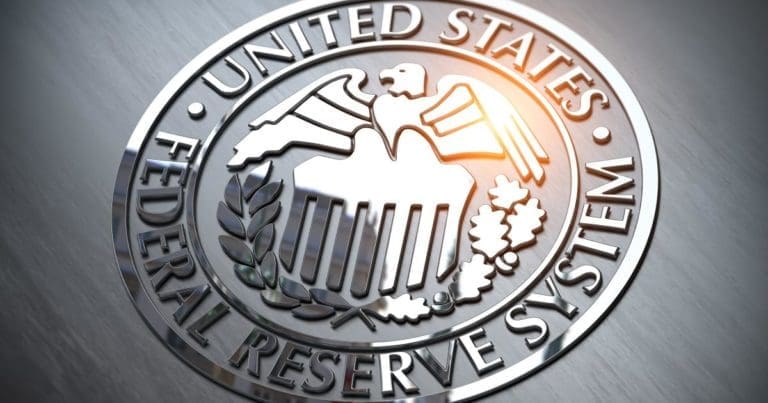Crypto News: Market Update June 2024
In June 2024, both the European Central Bank (ECB) and the U.S. Federal Reserve (Fed) made significant decisions in response to current economic conditions and inflation trends. These decisions impact interest rates and broader economic outlooks in both regions. Below is an overview of the recent measures and events in the financial markets.
June 6: ECB Lowers Interest Rates for the First Time in 5 Years
The European Central Bank (ECB) has lowered interest rates by 25 basis points to 3.75% for the first time in five years, amid growing uncertainty about inflation. While the rate cut is seen as the beginning of an easing cycle, persistent price and wage pressures cloud the outlook. The ECB will base further actions on economic data and has kept options open for July, though a pause seems likely. Economists expect two more rate cuts this year, while markets are pricing in one to two additional reductions. The raised inflation projection for 2025 and the potential influence of the U.S. Federal Reserve make the ECB more cautious. (Source: Reuters)
June 7: U.S. Adds More Jobs Than Expected in May, Unemployment Rises to 4%
In May, the U.S. economy created 272,000 jobs, significantly more than the expected 185,000, according to the Department of Labor. Unemployment rose slightly to 4% from 3.9% in April. Job growth was broad-based, with significant contributions from healthcare, government, and hospitality. The average hourly wage increased by 0.4% in May, resulting in an annual rise of 4.1%. This suggests continued inflationary pressure.
The strong labor market and higher wages make an interest rate cut by the Federal Reserve in September unlikely. This is because the current state of the labor market supports economic growth and increases the likelihood of persistent inflation. (Source: CNBC)
June 12: U.S. Consumer Prices (CPI) Steady in May; Strengthen Expectations for Rate Cut
In May, consumer prices in the U.S. unexpectedly remained stable, driven by cheaper gasoline and other goods that offset higher housing costs. This data reduces the likelihood that the Federal Reserve will cut interest rates before September. Core inflation rose by 0.2% in May and by 3.4% year-over-year, which was significantly lower than expected. Despite the stabilization of inflation, it remains above the Fed’s 2% target, influencing the economic outlook and fueling the debate over the timing of future rate cuts. (Source: Reuters)
June 12: Fed Keeps Interest Rates Steady, Signals Only One Rate Cut Expected This Year
On June 12, the Federal Reserve kept its key interest rate unchanged and indicated that only one rate cut is expected before the end of the year. The Federal Open Market Committee (FOMC) also signaled that it believes the long-term interest rate is higher than previously indicated.
The Fed noted that slight progress has been made toward the 2% inflation target in recent months. Markets, which were hoping for a supportive central bank, reacted positively to the announcement, with the S&P 500 reaching a record high.
The Fed’s “dot plot” indicated a more aggressive rate cut in 2025, with a total of four reductions. For 2024, participants raised their inflation expectations to 2.6%, slightly higher than previously forecast. The Fed remains focused on core inflation as a better long-term indicator and predicts a return to the 2% target by 2026.
For now, the federal funds rate remains in a range of 5.25% – 5.50% after a series of hikes since March 2022. However, the Fed emphasizes that it is not yet convinced of a solid foundation for easing policy, despite favorable economic reports. (Source: CNBC)
June 13: Wholesale Prices (PPI) Unexpectedly Fall by 0.2% in May
The Producer Price Index (PPI), which measures the prices producers receive for goods and services in the open market, fell by 0.2% in May, according to the Bureau of Labor Statistics. This was unexpected and indicates a decline in inflation. Excluding food, energy, and trade services, the PPI remained unchanged, compared to expectations of a 0.3% increase. On a year-over-year basis, the PPI for all items rose by 2.2%.
These figures, along with an increase in initial unemployment claims, strengthen hopes for interest rate cuts by the Federal Reserve later this year. (Source: CNBC)
June 28: Inflation Rose by 2.6% Year-over-Year in May, as Expected
The core Personal Consumption Expenditures (PCE) price index, a key inflation measure for the Federal Reserve, rose by 0.1% month-over-month in May and 2.6% year-over-year, the lowest annual increase since March 2021. Including food and energy, overall inflation remained flat month-over-month and also increased by 2.6% year-over-year. This confirms that monetary policy is working and that inflation is gradually decreasing, according to Mary Daly, President of the San Francisco Fed. While personal incomes rose, consumer spending increased less than expected. Housing costs continued to rise, posing a challenge for the Fed to lower rates as previously anticipated. Investors now expect the Fed to implement only two rate cuts later this year, beginning in September. (Source: CNBC)
Conclusion
Recent economic developments are showing mixed signals. In Europe, the ECB has cut interest rates for the first time in five years to combat inflation, while in the U.S., strong job growth and rising wages reduce the likelihood of a rate cut by the Fed. Despite stable consumer prices and falling wholesale prices, core inflation remains above the Fed’s target. While investors remain optimistic about rate cuts later this year, persistent inflation and rising housing costs continue to pose challenges for monetary policy.



